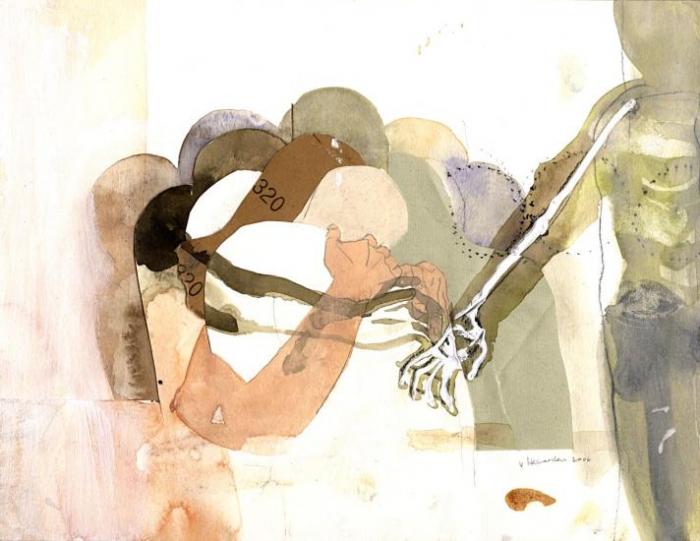It is an incontestable fact that in the work of Caren Van Herwaarden the human body plays the role of greatest importance. In however fragmentary a manner she constructs her drawings, with torsos and structure intertwining, the impression remains that here, on display, are two elements of fundamental significance. In his Laws, Plato writes that we as human beings have no choice but to undergo instruction from two most exacting preceptors: pleasure and pain. It is these that through either delight or frightfulness teach us – but always through compulsion - to live and to survive. Since we all hold in common most of the things that are pleasurable or painful, these – pleasure and pain - make brothers of men, strengthening the ties between them. Because no two people experience pleasure or pain in the same way, nor, in the course of their lives, are they exposed to exactly the same enjoyment and suffering, these endow each one of us with a unique personal ‘biography’. And in this way they give shape to the true individuality of each human being. Caren Van Herwaarden imbues her drawings with individuality and otherwise gives expression to that pleasure and pain, in a manner that is not explicit. Her work evokes reflection on these rather than spelling them out literally. Yet one sees in the complexity of some of her compositions duality as a vital containing factor. I suggest: Eros and Death, but there is surely more than this involved. In this drawing one sees an isolated figure that fruitlessly attempts to reach out to a closed group of human beings. The manner in which Van Herwaarden renders the figure on the right, with parts of the arm drawn as a skeleton, makes it all the more clear that the compass of the metaphorical solitude is vast and that the closed nature of the group is yet again hardened by the approach. The transparency with which parts of the work are invested preserves the whole from ponderousness. The narrative nature of the work is important, but it is not forced, one-dimensional.
© Copyright 2007: Arno Kramer 2007
|














